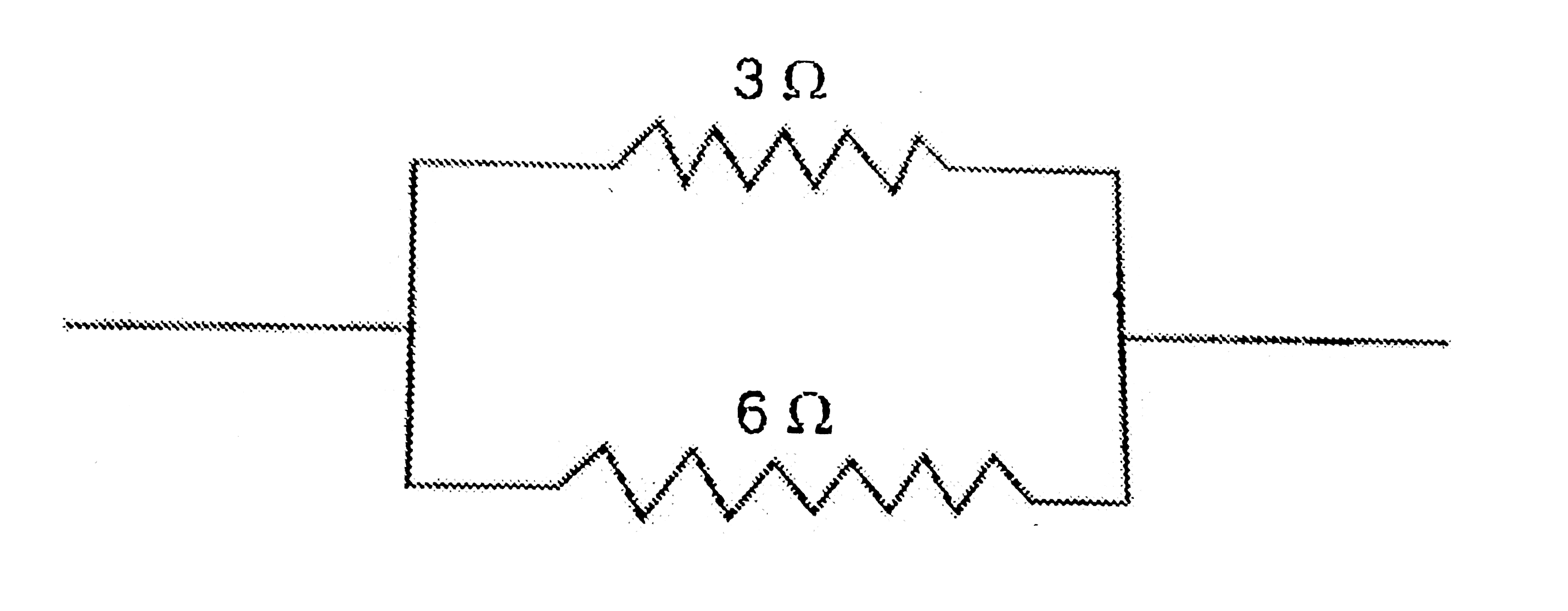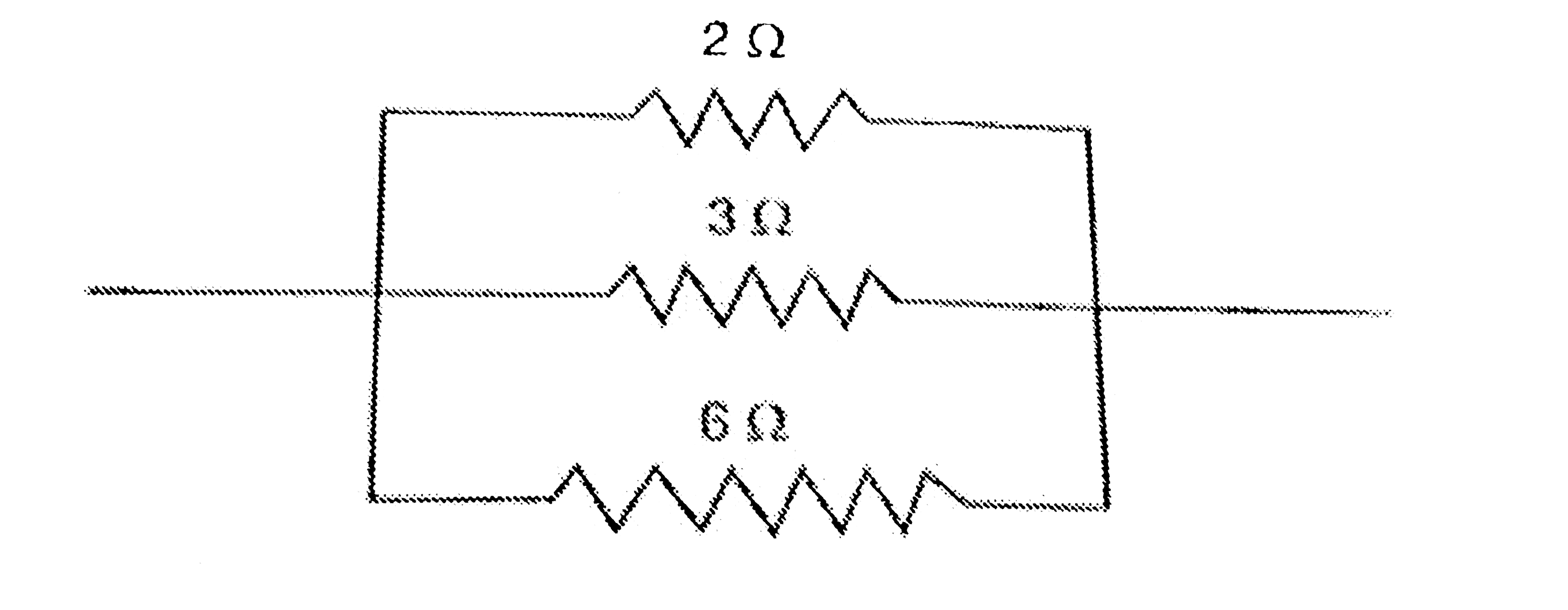How can three resistors of resistances 2Ω,3Ω, and 6Ω be connected to give a total resistance of
(a) 4Ω
(b) 1Ω ?
Video Solution
Text Solution
(a) In order to obtain a total resistance of 4Ω from three resistors of 2Ω,3Ω and 6Ω:
(i) First connect the two resistors of 3Ω and 6Ω in parallel to get a total resistance of 2Ω. This is because in parallel combination:
1R=1R1+1R2
1R=13+16
1R=2+16
1R=36
R=63
R=2Ω

(ii) Then the parallel combination of 3Ω and 6Ω resistors (which is equivalent to 2Ω resistance) is connected in series with the remaining 2Ω resistor to get a total resistance of 4Ω. This is because in series combination:
R=R1+R2
R=2+2
R=4Ω
The arrangement of three resistors of 2Ω,3Ω and 6Ω which gives a total resistance of 4Ω can now be represented as follows:

Thus, we can obtain a total resistance of 4Ω by connecting a parallel combination of 3Ω and 6Ω resistors in series with 2Ω resistor.
(b) In order to obtain a total resistance of 1Ω from three resistors of 2Ω,3Ω and 6Ω, all the three resistors should be connected in parallel. This is because in parallel combination:
1R=1R1+1R2+1R3
1R=12+13+16
1R=3+2+16
1R=66
R=66
R=1Ω

|
Topper's Solved these Questions
- ELECTRICITY BOOK - LAKHMIR SINGH & MANJIT KAURCHAPTER - ELECTRICITY EXERCISE - Very Short Answer Type Questions
1 Videos
- ELECTRICITY BOOK - LAKHMIR SINGH & MANJIT KAURCHAPTER - ELECTRICITY EXERCISE - Short Answer Type Questions
2 Videos
- ELECTRICITY BOOK - LAKHMIR SINGH & MANJIT KAURCHAPTER - ELECTRICITY EXERCISE - Sample Problem
1 Videos
- MAGNETIC EFFECT OF ELECTRIC CURRENT BOOK - LAKHMIR SINGH & MANJIT KAURCHAPTER - MAGNETIC EFFECT OF ELECTRIC CURRENT EXERCISE - NCERT BOOK
2 Videos
Similar Questions
Knowledge Check
Two resistors of resistances 2Ωand4Ω when connected to a battery will have :
Asame current flowing through them when connected in parallelBsame current flowing through them when connected in seriesCsame potential difference across them when connected in seriesDdifferent potential differences across them when connected in parallel.If three resistors of resistance 2Ω,4Ω and 5Ω are connected in parallel then the total resistance of the combination will be
A2019ΩB1920ΩC1910ΩD1019Ω
How can three resistors of resistance 2Ω,3Ω and 6Ω be connected to give a total resistance of (i) 4Ω, (ii) 1Ω?
View SolutionHow can the resistances of 2Ω,3Ω and 6Ω be connected to give an effective resistance of 4Ω ?
View SolutionHow will you join the resistors of resistances 3Ω,6Ω and 8Ω to get an equivalent resistance of 10Ω?
View SolutionGiven three resistors of resistances 1Ω,2Ωand3Ω. How will you combine them to get an equivalent resistance of 115Ω ?
View SolutionGiven three resistances of 30Ω each. How can they be connected to given a total resistance of (i) 90Ω(ii)10Ω(iii)45Ω ?
View SolutionHow will you connect three resistors of 2Ω,3Ω and 6Ω to obtain a total resistance of : (a) 4Ω, and (b) 1Ω?
View Solution
